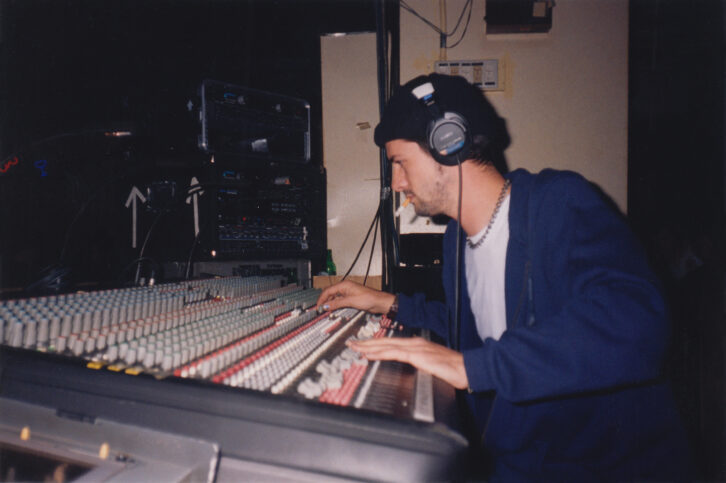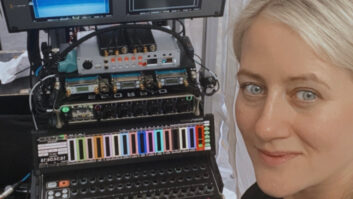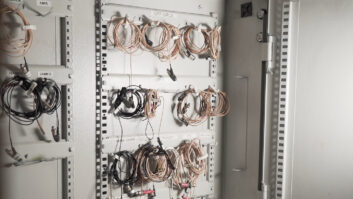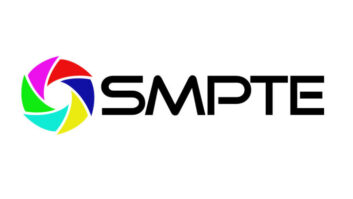
‘This article originally appeared in the January 1998 issue of Pro Sound News.
New York, NY (November, 1997)—This is the tale of a band and an engineer who graduated from 500-capacity clubs to 80,000-seat stadiums in less than six months.
Interscope, which seems to have the golden touch these days, signed Smash Mouth in June of ’97 and had the band in heavy rotation on MTV that very same month. The band subsequently topped the modern rock charts for five weeks with flavor-of-the-month ska hit “Walking On The Sun.” When the summer began, they were opening for Sugar Ray in West Coast clubs; they spent the fall opening on the US leg of U2’s PopMart tour.
Live sound engineer Jon Dunleavy began his stint with Smash Mouth in July, after meeting the band while on tour with L.A. neo-sludge metal band Plexi and hot new thing Sugar Ray. The Plexi gig was up for Dunleavy, so he signed on with Smash Mouth for three weeks in the U.S. and Canada with Blur. That, following Smash Mouth’s commercial success, led to a six-month headlining tour that brought them through New York for a stop at industry showcase must-play, Tramps. That’s where Pro Sound News caught up with Dunleavy and the band.

Dunleavy has worked in the studio with artists like Mark Lanegan, Truly, Gas Huffer, Screaming Trees and the Supersuckers, as well as luminaries like Willie Nelson, Johnny Cash and Steve Earle. Live, he has toured with most of the above as well as worked with the Toadies, Joan Jett and 7 Year Bitch.
Ironically, before becoming an engineer, Dunleavy was a musician. “My first band was Monkey Business,” said Dunleavy, referring to a moderately successful Seattle-based ska/funk band of the early ’90s. Sitting in Smash Mouth’s tour bus with drummer Kevin Colman warming up, Dunleavy said what he thought of the recent popularization of SoCal ska/punk: “It’s a little ridiculous.” Colman laughed.
VITAL STATS: Smash Mouth |
| FOH Engineer: Jon Dunleavy |
| FOH Equipment: Yamaha SPX990, Yamaha DM5 with a drum module; Roland SDE330; (3) dbx 160XT compressors, 1066 comp/gates, dbx 120 subharmonic synthesizer; (4) Behringer Intelligates; Eventide HDE3000; Drawmer 1060 tube compressors
In Ear Monitors: Shure Microphones: Shure SM98, SM91, Beta58A wireless; EV 408, 868 |
Gear-wise, this has been a strange tour. Going from clubs to arenas has, not surprisingly, required some equipment upgrades along the way. “When we were hooked up with Sugar Ray, we were playing relatively small-ish clubs,” explained Dunleavy. “I had some of my own pieces out, but we used mostly house systems. Most 500- to 1,000-person clubs don’t have the greatest equipment—or that much of it—and when you are opening, the headliner uses all the good stuff.”
Jimmy Buffett Live in 1998: Turning Manhattan into Margaritaville
About that time, the “Walking On The Sun” single started taking off and the group moved onto a tour opening for Blur. “With that, the sound company [Eighth Day Sound] didn’t provide much,” continued Dunleavy, “so we just went ahead and rented a bunch of gear.” That included Yamaha SPX990s, Roland SDE330s, dbx compressors and Behringer Intelligates. “The mix and effects are pretty straightforward pop-rock.
By October, the band had a major hit on its hands, and began headlining at bigger clubs. “On this tour, I brought everything I have, and since we’ve been headlining, we get everything the club has.”
Dunleavy’s mic complement now includes Shure SM98s, EV 408s for drums and an EV N/D868 for bass. He puts a SM91 on kick drum. The group has also gone wireless, with Shure Beta58A wireless and Shure personal monitors for lead vocalist Steve Harwell.

The final step has been the move into stadiums. U2 has been using Clair Brothers for the PopMart tour, so everything has been smooth sailing as far as equipment goes. The challenge has been getting used to the stadium acoustics. “The first show with U2 was pretty crazy,” said Dunleavy. “An 80,000 seater—that was the first time I had done that! It’s a big reverb and delay chamber, and it all becomes the Zen Art of Mixing. You aren’t really hearing what is coming off the stage; you’re hearing it third-hand after a few delays—but once you get it figured out, it gets easier. Still, it is strange to be 250 feet back from the stage.”
So what is next for this team of upstarts? “In the new year, we are going to do nine weeks with Third Eye Blind,” said Dunleavy. “We want to take out the new EV X-Array system for that.” These guys certainly don’t think small.







